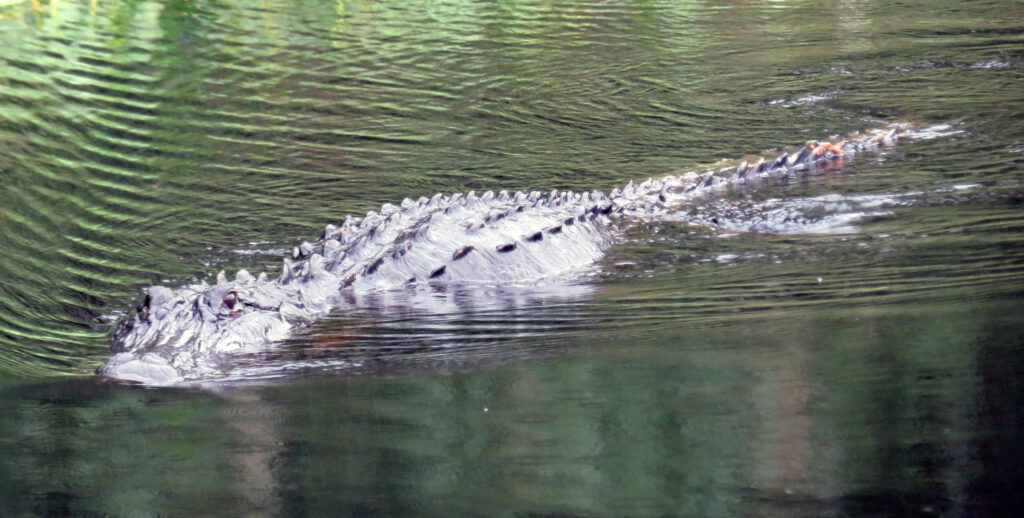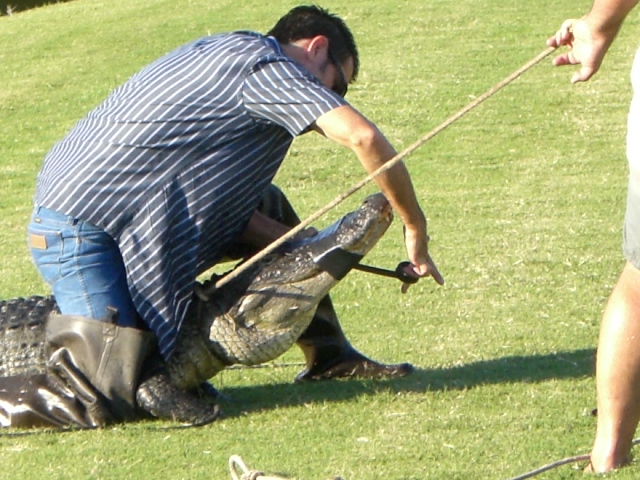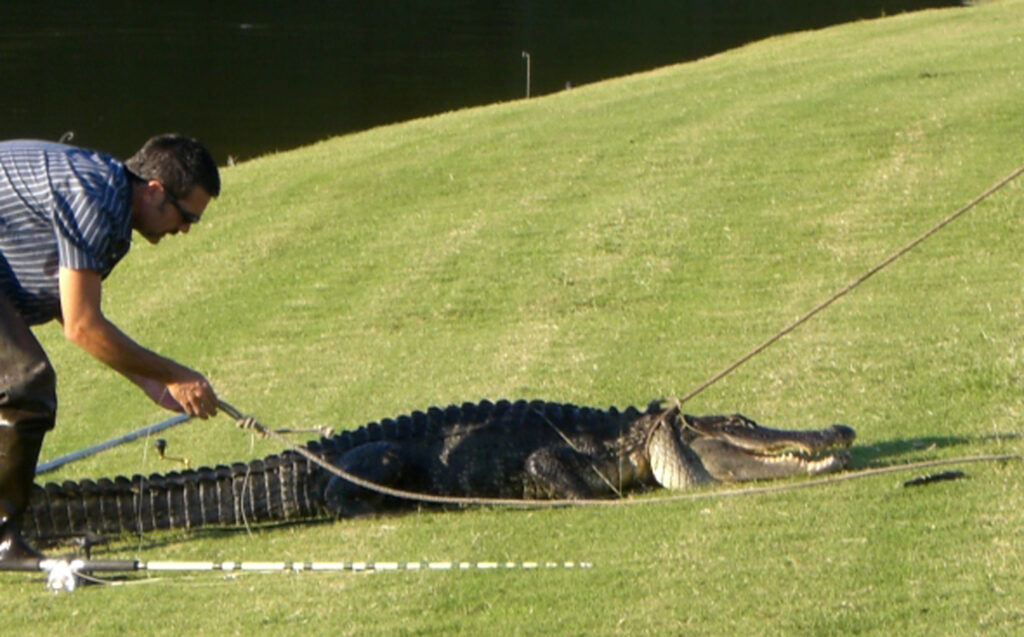
Coming soon to a lake near you – or passing from one to the other along yards or roads – alligators. Most residents enjoy the wildlife in our area, and alligators are one of the attractions. Generally, they aren’t dangerous, particularly if they are under four feet long. Large alligators can become dangerous if they lose their fear of people, which often happens because someone feeds them. For new residents unfamiliar with Florida gators, they can be alarming even when they aren’t dangerous.
Since 2008, we have had four large alligators removed from Berry Roberts Lake. Two were over ten feet long. A gator this size that follows people or comes up onto your property and approaches people and shows no fear of them is a defined as a “nuisance” under Florida Fish and Wildlife Conservation Commission guidelines and can be removed. Removal requires board authorization.
We strongly feel that our residents’ safety is paramount, but we do not wish to have wildlife destroyed unless it is truly necessary. The trappers hired by the state own the animal and generally it is killed and sold for meat and hide. It is not removed to a safe location and released. Therefore, be sure the alligator is truly a nuisance before asking to have it removed.
It is IMPERATIVE that NO ONE FEED ALLIGATORS. Feeding them increases the chances that they will lose their fear of people, expect to be fed, and become dangerous. It is illegal to feed them. Fishing with live bait may attract them.
Alligators are protected in the state of Florida. Do not approach or threaten them. State law prohibits killing, harassing, or possessing them. Alligators are most active between dusk and dawn.
An excellent source of information on alligators is the Florida Fish and Wildlife Conservation site:
Living With Alligators and Crocodiles
WHAT IS A NUISANCE ALLIGATOR?
Alligators at least four feet in length that pose a threat to people, their pets, or property may be considered a nuisance. Alligators less than four feet in length are usually not considered a nuisance because they are naturally fearful of people, not generally capable of eating anything larger than a small turtle (they eat small fish, frogs and other small animals), too small to be a threat even to small pets and pose no threat to people unless someone attempts to handle them. Occasionally alligators less than four feet in length are legitimate problems if they approach people, do not retreat if approached, or are in a location that is not natural.
Link to the Statewide Nuisance Alligator Program web page:
Statewide Nuisance Alligator Program
What should you do if there is a nuisance or dangerous alligator on or near your property?
- TAKE A PHOTO OF THE GATOR on your property. Do not approach it. The photo shows that the gator is in an inappropriate location where it could endanger humans and may not be afraid of them.
- Call the Nuisance Alligator Hotline 1-866-FWC-GATOR (1-866-392-4286). You will be given a case number.
- Call a Wedgewood board member with your request and case number. In a deed restricted community, the state requires a board member to give permission to have the alligator removed.
- The Florida Fish and Wildlife Commission will inform you when they are coming to trap and remove the gator if the decision to remove the alligator is made.
- Bear in mind that alligators move from pond to pond and lake to lake. In areas like the conservation area behind the west side of Berry Roberts Drive, they may come and go to the river through Cypress Creek. An alligator there today may be gone tomorrow.
Notes: Photos below courtesy of Bill Regis. This gator was removed from the Berry Roberts Lake in 2010. This article was originally posted on the “News” (blog) area of the Wedgewood website. Links on this page have been updated 9-23-2022


